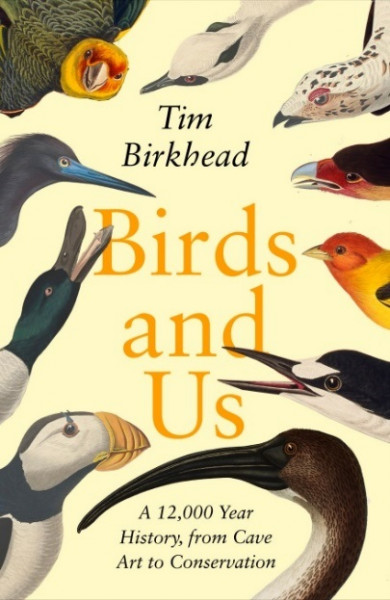
Publisher: Viking Books, London
Publication Year: 2022
Binding: 2
Page Count: 473
ISBN Number: 9780241460498
Price: £24.99
Birds and Us: A 12,000 Year History, from Cave Art to Conservation
The scope of Birds and Us is impressive, beginning 8,000 years ago with Neolithic cave art and ending on a 2018 undergraduate trip to Bempton Cliffs. As BTO Vice-president Prof Tim Birkhead takes us through the millennia in between, he weaves together art, religion and science with rich historical detail, mini-biographies and personal anecdotes. The book is written clearly and directly, and the result is a highly engaging journey which will appeal to anyone interested in the relationship between human society and birds.
The book brims with factual information, which at most times is threaded well through the overarching narrative. Learning something new while reading Birds and Us is almost inevitable, given the variety of subjects it covers: ancient Egyptian tomb paintings, the work of Aristotle and Pliny the Elder, the Bayeux Tapestry, Renaissance anatomical dissections, Aztec culture, the early efforts to document birds in Britain and Europe, Darwin, the Church, pre-Raphaelite art, and the rapid development of ornithology and behavioural ecology as ‘proper science’ throughout the 20th century.
It should be made clearer, though, that Birds and Us is a Eurocentric labour of love. Although the preface tells us the book will take us across several continents, the few portions of the book focused on areas outside Europe are framed by the contributions of appropriated knowledge, natural resources and cultural artefacts to Western science. The book lacks an explicit description of its limitations in this respect, something which emphasises its inconsistent acknowledgements about the footprint of colonialism on ornithology.
The final chapters may be of particular interest to BTO readers, detailing the shift towards birdwatching rather than collecting (helped along, of course, by the advent of binoculars), the formation of BTO in 1932, and the creation of the journal Bird Study to document the results of BTO’s surveys. Several key figures for whom BTO holds archival documents are also mentioned, including Emma Louisa Turner, a pioneering early photographer of birds.
Throughout the book, the historical narrative is interspersed with anecdotes from the author’s own journey through birdwatching and ornithology, culminating in his work observing Guillemot behaviour on Skomer for over five decades. This is one of the book’s greatest strengths: by presenting the development of society’s relationship with birds in parallel with his own, Prof Birkhead transforms what could have been a distant, dry history into something much more intimate. His personal reflections encourage us to consider our own unique experience of birds, how this was shaped by culture, and how it may evolve as we move into a future of biodiversity and climate crisis.
Book reviewed by Miriam Lord
Buy this book




Share this page